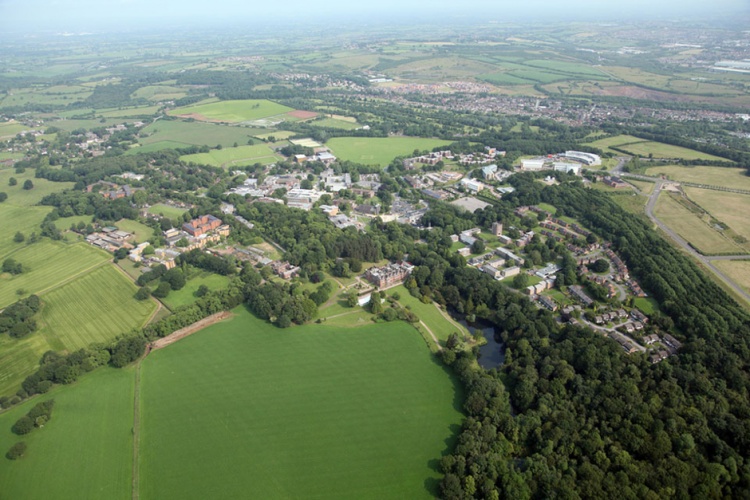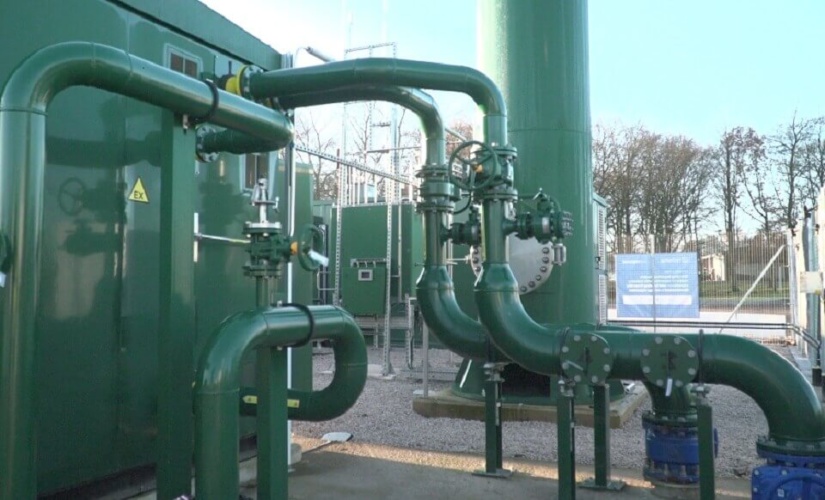Britain’s gas grid is one of the safest and most reliable in the world, delivering the energy that over 24 million homes and businesses rely upon for their heating, hot water, and cooking. It carries between 4-5 times the amount of energy than electricity at peak demand – delivering it at the times when people need it the most.
Reducing the carbon emissions from our homes is one of the biggest political and engineering challenges we face in the journey to Net Zero.
HyDeploy project to add hydrogen to a UK gas network
Why we should use university campuses as “living labs” for local energy technology
Ensuring that people have a choice of different appliances is essential, so that energy companies – not hard-working households – do much of the heavy lifting. We need both gas and electricity infrastructure to deliver that choice, in the form of hydrogen-ready boilers, electric heat pumps or hybrid systems combining the two, so that people can choose the right solution for their homes, to minimise the disruption of changing technologies.
Britain’s gas network operators are some of the most innovative in the world and are using cutting-edge engineering to run trials to build the safety case for the use of hydrogen for our heating, hot water and cooking. Through these projects, we will ensure that through a transition to hydrogen Britain’s gas grid is every bit as safe as it is today – and even safer.
At the world-leading hydrogen testing site at Spadeadam in Cumbria, gas distribution networks and National Grid are testing existing gas pipelines and other infrastructure to see how hydrogen behaves in a ‘real’ way in a ‘real’ environment compare its performance to natural gas, involving more than 380 experiments to understand how hydrogen behaves if it does leak.
And at Low Thornley in Gateshead, three houses are being constructed by gas networks Cadent and Northern Gas Networks as hydrogen show-homes, with garage areas, gardens, cellar spaces, various types of internal walls and flooring, various cavity wall insulations, that will be open for people to see how hydrogen in our homes will work in action.

All of this work compliments trials undertaken in the first stage of the HyDeploy project, at Keele University where they have been pioneering the blending of up to 20 per cent hydrogen into the gas grid, using an electrolyser to split water into hydrogen and oxygen. Hydrogen is mixed with natural gas before the gas enters the pipes. This is done via a special injection and mixing unit which can be carefully controlled and monitored to ensure that the hydrogen and natural gas blend remains consistent as gas flows vary.
At a larger scale, SGN’s H100 project is the first of its kind to employ a direct supply of clean power to produce hydrogen for domestic heating in 300 homes – putting Levenmouth at the forefront of the clean energy revolution. The system will be designed and built to ensure the same high safety and reliability standards expected from the current gas system. An on-site storage unit will hold enough hydrogen to ensure supply won’t be disrupted during even the coldest weather conditions.
They will be testing the evidence and safety elements while carrying out studies to identify, resolve and evidence known local network features and issues in preparation for construction and operation of a hydrogen network.

Energy Networks Association is also responding to the challenge, bringing together all five of Britain’s gas network companies as part of our Gas Goes Green programme. We are following the Gas Goes Green Pathway to Net Zero, which sets out the actions that need to be taken to deliver the world’s first zero carbon gas grid by 2050.
At the beginning of this year, we published Britain’s Hydrogen Network Plan. This sets out the detail of the activity that Britain’s gas network companies will undertake in the coming years to convert Britain’s world-leading gas grid to run on a mixture of hydrogen and biomethane, instead of natural gas.
In May this year, we published our Gas Goes Green hydrogen safety commitment. Signed by all five of Britain's gas network companies, it sets out how our innovation projects will ensure that we deliver hydrogen to Britain's homes safely and securely.
The innovative trials, engineering, and plans that are being carried out will create the opportunity to reduce our carbon emissions in a way that means we can use our heating, hot water & cooking exactly as we are used to. And as Britain stands on the cusp of a world-leading hydrogen revolution, our gas network companies are at the forefront of that change.
Chris Train, Energy Networks Association’s Gas Goes Green Champion











National Gas receives funding to develop Gravitricity underground hydrogen storage system
One single rock salt mine - Winsford - has 23 <i>MILLION </i>cubic metres of void and even allowing for 10% of that void set aside for hazardous waste...